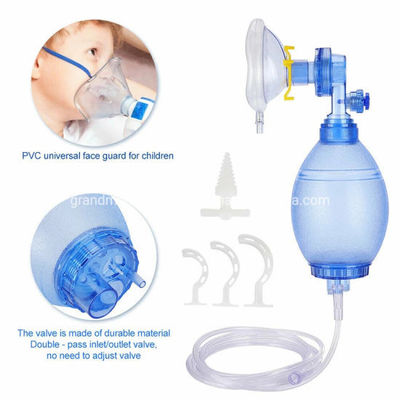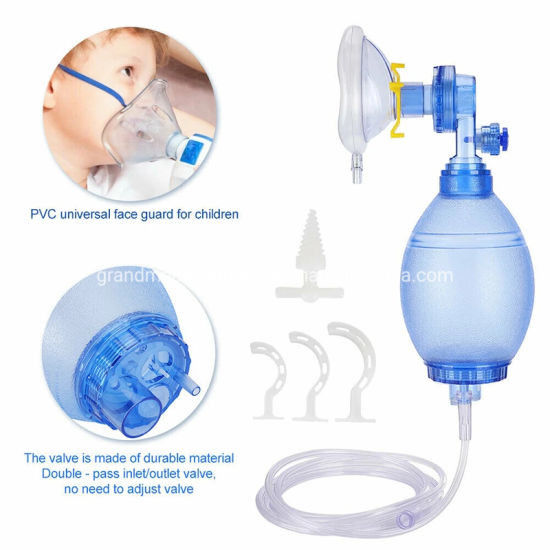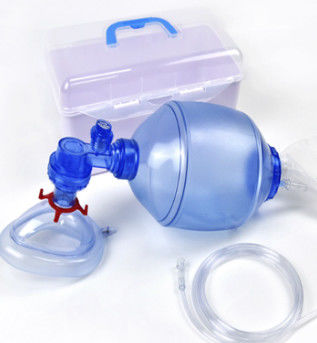-
Highlight
PVC Ambu Bag
,Adult Manual Resuscitator
,1500ml PVC Ambu Bag
-
NameAmbu Bag
-
MaterialPVC
-
DesignUser-friendly
-
Oxygen TubeDeliver Supplemental Oxygen
-
SizesAvailable
-
PortabilityCompact And Portable
-
Safety FeaturesNon-toxic, Latex-free Construction
-
VersatilityHospitals, Clinics, Ambulances, And Emergency
-
CertificationCE
-
Disinfecting TypeEOS
-
PackingIndividual Packing
-
Place of OriginChina
-
Brand NameHenan
-
CertificationCE
-
Model NumberCan be Customized
-
Minimum Order Quantity5000pcs
-
PriceNegotiable
-
Packaging DetailsIndividual Packing
-
Delivery Time24-30 days
-
Payment TermsL/C, T/T
-
Supply Ability50000000pcs per month
Adult Manual Resuscitator 1500ml PVC Ambu Bag+Oxygen Tube
Adult Manual Resuscitator 1500ml PVC Ambu Bag+Oxygen Tube
1.Product Description:
The PVC Ambu Bag with Oxygen Tube is a vital emergency resuscitation device designed to deliver manual breaths to individuals who are experiencing respiratory distress or failure. This portable and user-friendly device is essential in providing immediate oxygenation and ventilation support in critical situations.
2.Key Features:
- Durable Construction: Constructed from high-quality PVC material, the Ambu bag is durable and long-lasting, ensuring reliable performance during emergency situations.
- Transparent Design: The transparent design allows for easy monitoring of the patient's respiratory efforts and lung inflation.
- Oxygen Tube: Equipped with an oxygen tube to deliver supplemental oxygen directly to the patient during resuscitation efforts.
- Multiple Sizes Available: Available in various sizes to accommodate different patient populations, from pediatric to adult.
- User-Friendly: Easy to assemble and operate, making it suitable for use by healthcare professionals and first responders.
3.Product picture
![]()
4.Benefits:
Immediate Respiratory Support: Provides immediate respiratory support during emergencies, helping to maintain oxygenation and ventilation.
Versatile Use: Suitable for use in hospitals, clinics, ambulances, and other healthcare settings, as well as in pre-hospital emergency care.
Compact and Portable: Compact design and lightweight construction make it easy to transport and use in various settings.
Disposable and Hygienic: Designed for single-patient use to ensure hygiene and prevent cross-contamination.
5.Usage Instructions:
Attach Oxygen Tube: Connect the oxygen tube to the Ambu bag and oxygen source securely.
Position the Mask: Place the mask securely over the patient's nose and mouth, ensuring a proper seal.
Squeeze Ambu Bag: Squeeze the Ambu bag to deliver manual breaths to the patient at a rate appropriate for the individual's needs.
Monitor Patient: Continuously monitor the patient's respiratory status and adjust ventilation as needed.
Disclaimer: Proper training and certification in resuscitation techniques are essential for using this device effectively in emergency situations.
This description highlights the key features, benefits, and usage instructions for a PVC Ambu Bag with Oxygen Tube, emphasizing its critical role in providing respiratory support during emergencies.
6.Can you explain how to properly use an Ambu bag?
Preparation:
Ensure that the Ambu bag is assembled and ready for use.
Attach an oxygen source to the oxygen inlet on the Ambu bag.
Select the appropriately sized mask or airway device for the patient.
Positioning:
Position the patient appropriately, typically lying on their back on a flat surface.
Ensure that the patient's head is in a neutral position to maintain the airway alignment.
Mask Placement:
Place the mask securely over the patient's nose and mouth, ensuring a proper seal to prevent air leakage.
Seal Check:
Perform a seal check by squeezing the bag and observing chest rise. Ensure that the chest rises with each squeeze, indicating effective ventilation.
Ventilation:
Place one hand on the mask to hold it in position and the other hand on the Ambu bag.
Squeeze the Ambu bag gently and steadily to deliver a breath to the patient. Each squeeze should be followed by a brief pause to allow for exhalation.
Timing:
Ventilate the patient at an appropriate rate, typically around 10 to 12 breaths per minute for adults and 20 to 30 breaths per minute for infants and children.
Monitoring:
Continuously monitor the patient's respiratory status, including chest rise, oxygen saturation levels, and responsiveness.
Adjust ventilation as needed based on the patient's condition and response.
Team Communication:
If available, coordinate with other healthcare providers to ensure proper ventilation and patient care.
Continued Care:
Continue providing manual ventilation until the patient's spontaneous breathing resumes or advanced medical assistance arrives.
Documentation:
Document the details of the ventilation provided, including the rate, duration, and patient response for future reference.



